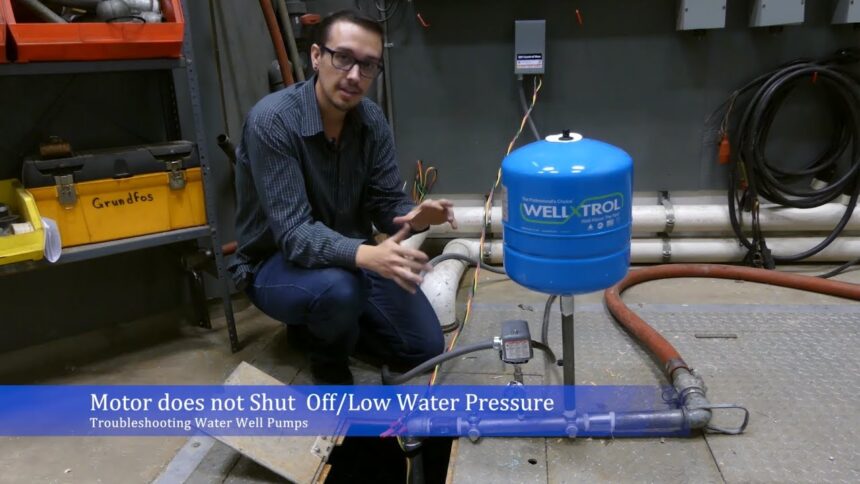First, ensure the power supply is operational when a water well pump stops working. Inspect the pressure switch for issues and examine circuit breakers. Additionally, assess the pump for clogs or mechanical failures. Routine maintenance can ensure a steady supply of water and avoid future problems.
Understanding How a Water Well Pump Works
Many households, particularly those in rural or isolated places, find a water well pump essential. Its primary role is to extract water from an underground well and deliver it to your home’s plumbing system, ensuring a consistent water supply for everyday use. An interruption in this supply often hints at a water well pump repair issue, which should be addressed promptly to prevent further inconvenience.
Grasping the basic mechanics of your sound system can significantly help with troubleshooting. Most systems consist of a pump, a pressure tank, and various other components, including a pressure switch and connecting pipes. When water pressure dips, the pressure switch activates the pump to restore water flow. Therefore, understanding these functions can demystify potential problems when they arise.
Identifying Common Issues
When the taps run dry, it’s time to investigate what might be causing the disruption. Common issues that halt pump operation include electrical failures, pressure switch malfunctions, and leaks in the water lines. Early identification of these problems can restore your water supply swiftly and help dodge costly repairs in the future.
Checking the Power Supply
The initial step in your troubleshooting journey should be ensuring the pump receives power. Often, power issues are mistakenly attributed to pump malfunction. Here’s a straightforward checklist to confirm your electrical connections are intact:
- Verify whether the pump’s circuit breaker is in the ‘on’ position and hasn’t tripped unexpectedly.
- Inspect the fuses associated with the pump circuit; sometimes, merely replacing a blown fuse resolves the problem.
- Connect a different appliance to ensure the outlet is functional and confirm it receives power.
These simple checks can quickly distinguish electrical issues from more serious mechanical ones.
Testing the Pressure Switch
A common source of failure is the pressure switch, which is essential to the water supply. It activates the pump when water pressure in the tank drops below a set threshold. If it’s faulty, the pump won’t even start. Begin by removing the cover to examine its condition—often, issues arise from debris accumulation or corroded contacts. Popular Mechanics provides an excellent resource for testing and replacing a faulty pressure switch. Their advice could save you unnecessary costs and restore your water supply efficiently.
Inspecting for Leaky Pipes
Another common cause of pump failure is leaks in the water line. Leaks may lead to a gradual loss of pressure, causing the pump to behave erratically or stop working altogether. Warning signs include puddles around the pump area or damp spots where there shouldn’t be any. Listening to unusual hissing or gurgling noises in the pipes can indicate a problematic leak. Timely detection and repair of leaky pipes can maintain your pump’s functionality while conserving water.
Considering the Pump’s Age
All machines have a lifespan, and well pumps are no exception. Typically, the average expected lifespan for a well pump ranges from 8 to 15 years, largely dependent on usage, maintenance, and water quality. If your pump has reached this age bracket and you’re encountering persistent issues, it may be time to contemplate a replacement. An old or declining pump can result in higher repair costs, energy inefficiency, and unreliable water supply.
Consulting a Professional
If your troubleshooting efforts prove fruitless, enlisting a professional can be beneficial. Professional well contractors have the tools and expertise to diagnose complex issues accurately. They can recommend repair strategies or suggest new installations if necessary, ensuring your water system operates efficiently. Another benefit of hiring an expert is knowing that possible problems are avoided.
Preventive Maintenance Tips
Regular maintenance is critical to prolonging the life of your well pump and maintaining a stable water supply. Some practical measures include:
- Routinely checking and cleaning the pressure switch.
- Inspecting water pressure levels.
- Clearing out potential debris that could obstruct the pump’s performance.
Following a maintenance schedule, as suggested by resources such as the Family Handyman, can help avoid sudden system failures and ensure your well pump remains in optimal condition.
By understanding the mechanics of your water well pump and implementing a proactive approach to maintenance, you can ensure steady water access and get the most out of your system for many years.






